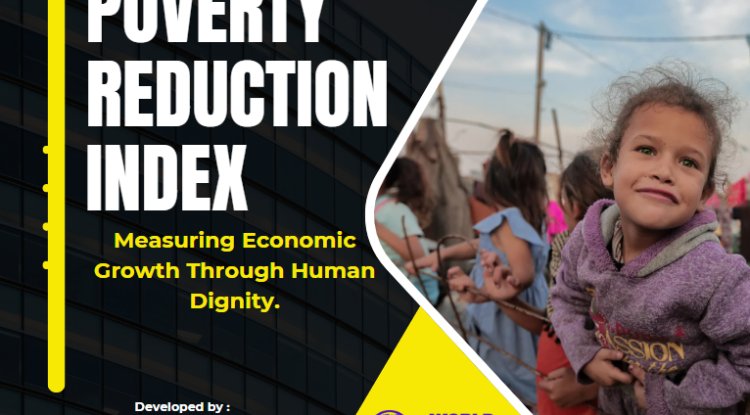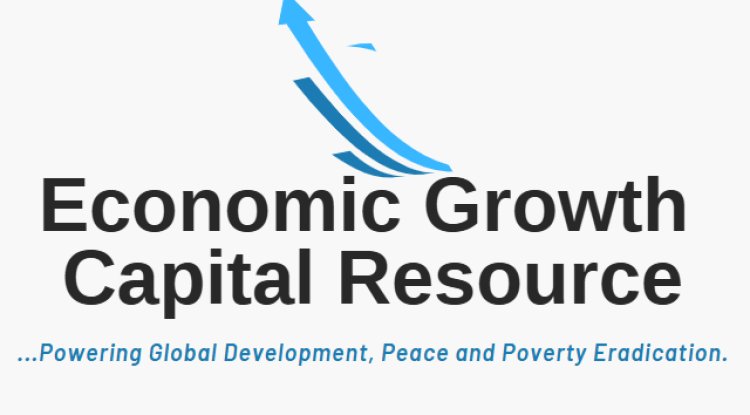Using the Expertise and Resources of Partner Organizations
Sub-national governments possess a valuable resource in their journey towards community development and economic growth: partner organizations. These organizations encompass a wide spectrum, including non-profits, educational institutions, private enterprises, and international agencies. With their great expertise, resources, and networks, these partners become instrumental in empowering sub-national governments to harness diverse capabilities, amplifying their endeavors in community development and economic prosperity. Let's take a critical look at how sub-national governments can harness the expertise and resources of partner organizations to drive their community's-community's growth and boost their sub-national economy.

Knowledge Sharing and Collaboration
Partner organizations possess specialized knowledge and expertise that can complement the efforts of sub-national governments. Governments can tap into this expertise by fostering a culture of knowledge-sharing and collaboration to address pressing community needs. For instance, educational institutions can contribute research and insights to inform policy-making, while non-profit organizations can provide valuable on-the-ground knowledge of community issues. Sub-national governments can leverage partner organizations' expertise for informed decision-making and targeted interventions by engaging in regular dialogues and joint initiatives.
Capacity Building and Skill Development
Partner organizations often excel in specific domains, such as education, training, and skill development. By collaborating with these organizations, sub-national governments can enhance the capacity and skills of their communities. Educational institutions can provide vocational training programs, while private businesses offer apprenticeships and mentorship opportunities. These initiatives empower community members with valuable skills, improving their employability and driving economic growth. Through such partnerships, sub-national governments can create a workforce that aligns with the evolving needs of industries, fostering entrepreneurship and attracting investments.
Access to Funding and Resources
Partner organizations, particularly non-profits and international agencies, can serve as crucial sources of funding and resources. Sub-national governments can collaborate with these organizations to secure grants, sponsorships, and donations for community development projects. Additionally, partner organizations may possess assets, infrastructure, or technology that the government can share or utilize. Leveraging these resources allows sub-national governments to stretch their budgets further, accelerate project implementation, and deliver enhanced services to their communities.
Innovative Solutions and Best Practices
Partner organizations often operate on the cutting edge of innovation and best practices. Sub-national governments can access innovative solutions and strategies for community development by collaborating with these organizations. For instance, technology companies can provide expertise in smart city solutions, while sustainability-focused organizations can offer insights into renewable energy and environmental conservation. Implementing these innovative solutions improves community members' quality of life, positions the sub-national region as a hub for innovation, and attracts investment and talent.
Market Access and Economic Opportunities
Private sector organizations can offer market access and economic opportunities that can drive the sub-national economy. By partnering with businesses, sub-national governments can promote local entrepreneurship, encourage business expansion, and attract investments. For example, collaborative initiatives can facilitate matchmaking between local businesses and potential clients or investors. This fosters economic diversification, job creation, and income generation within the community, leading to sustainable economic growth.
Social Impact and Community Engagement
Partner organizations focusing on social impact and community engagement can drive positive change. By collaborating with these organizations, sub-national governments can implement community-driven initiatives that address social challenges, promote inclusivity, and enhance the well-being of community members. This can include programs for poverty alleviation, healthcare access, cultural preservation, and social empowerment. Sub-national governments can amplify their impact through these partnerships, mobilize community resources, and create a sense of ownership and pride among community members.
International Cooperation and Global Networks
Partner organizations with an international presence can open doors to global networks, knowledge exchange, and funding opportunities. Sub-national governments can collaborate with international organizations, diplomatic missions, and foreign businesses to tap into these networks and access global expertise. International partnerships can bring foreign direct investment, promote exports, and attract tourists, strengthening the sub-national economy. Moreover, these collaborations enable cultural exchange, foster diplomacy, and position the region as a global player in the international arena.
Measurement and Evaluation
Sub-national governments must establish effective measurement and evaluation mechanisms to maximize the benefits of partnering with organizations. Governments can analyze the impact of partnerships on community development and economic progress by establishing defined objectives and key performance indicators. Regular monitoring and evaluation allow for course correction, identification of successful models, and replicating best practices in future initiatives. This ensures that partnerships are mutually beneficial, accountable, and aligned with the sub-national government's objectives.
Using the knowledge and resources of partner groups to drive community development and increase the sub-national economy is critical. The critical engagement of partner organizations enriches the decision-making process and promotes innovative solutions, market access, and global networks. By embracing strategic partnerships, sub-national governments can create inclusive and prosperous communities that thrive in the face of evolving challenges and opportunities.
Ensuring Partnerships Align with Local Priorities and Interests
In sub-national partnerships, it is crucial to ensure that collaborative efforts are closely aligned with local priorities and interests. Sub-national governments can effectively drive economic growth and foster prosperity by forging partnerships that genuinely reflect the unique needs and aspirations of the community. Before entering into such partnerships, there are several important factors to consider. These factors play a vital role in maximizing the potential for growing the sub-national economy and ensuring the long-term success of collaborative endeavors. Let's address these factors:
Understanding Local Context and Needs
Before embarking on any partnership, sub-national governments must deeply understand the local context and needs. This involves conducting comprehensive assessments, engaging with the community, and gathering relevant data. By understanding the region's economic challenges, opportunities, and aspirations, governments can identify the key areas where partnerships can make a meaningful impact. This understanding forms the basis for strategic decision-making and ensures that partnerships are tailored to the community's specific needs.
Collaborative Priority Setting
Aligning partnerships with local priorities requires an inclusive and collaborative priority-setting approach. Sub-national governments should engage with key stakeholders, including community leaders, businesses, non-profit organizations, and educational institutions. Through dialogues, workshops, and consultations, governments can collectively identify the most pressing issues and opportunities for economic growth. This collaborative priority-setting process ensures that partnerships are driven by a shared vision and consensus, increasing the chances of success and impact.
Developing a Shared Agenda
Once local priorities have been identified, developing a shared agenda for collaboration is crucial. This involves setting clear goals, objectives, and milestones that reflect the economic aspirations of the community. Sub-national governments should work closely with partner organizations to align their missions and strategies with the shared agenda. By establishing a common understanding of the desired outcomes, partnerships can be designed to address specific challenges, seize economic opportunities, and contribute to the overall growth of the sub-national economy.
Leveraging Comparative Advantages
Partnerships that align with local priorities should leverage the comparative advantages of each stakeholder. Sub-national governments must identify their unique strengths and resources, as well as those of partner organizations. This allows for a strategic distribution of roles and responsibilities, ensuring that each partner contributes in ways that maximize their expertise and resources. By leveraging comparative advantages, partnerships become more efficient, effective, and impactful in driving economic growth.
Promoting Inclusive and Equitable Development
Partnerships aligned with local priorities should prioritize inclusive and equitable development. Sub-national governments must ensure collaborations benefit all community segments, including marginalized groups and vulnerable populations. Governments can foster economic growth that leaves no one behind by actively seeking inclusivity in partnership activities, such as job creation, skill development, and access to resources. Inclusive partnerships contribute to social cohesion, reduce inequality, and build a resilient economy that thrives on diversity and equal opportunities.
Stakeholder Engagement and Participation
Engaging stakeholders throughout the partnership process is crucial to ensure alignment with local priorities and interests. Sub-national governments should create platforms for ongoing dialogue and participation, allowing community members and stakeholders to contribute their insights and ideas. This engagement fosters a sense of ownership and empowers the community to shape the partnership's direction actively. By involving stakeholders in decision-making, partnerships become more responsive to local needs, enhancing their potential to drive economic growth.
Monitoring, Evaluation, and Adaptation
Sub-national governments must establish robust monitoring and evaluation mechanisms to ensure that partnerships remain aligned with local priorities. Regular assessments allow for the measurement of progress and the identification of areas that require adaptation or improvement. Governments can make informed decisions to steer partnerships in the right direction by collecting feedback, analyzing data, and conducting impact assessments. This iterative approach ensures that partnerships remain responsive to evolving local priorities, allowing for dynamic adjustments that maximize their contribution to economic growth.
Sustainability and Long-term Planning
Partnerships aligned with local priorities should be built on a foundation of sustainability and long-term planning. Sub-national governments must consider the longevity of partnerships by integrating them into strategic plans and policies. By embedding partnership initiatives into long-term development frameworks, governments demonstrate their commitment to sustained economic growth. This approach enables continuity, facilitates resource mobilization, and attracts further investment, creating an environment conducive to long-term economic prosperity.
Ensuring that partnerships align with local priorities and interests is integral to driving sub-national economic growth. These partnerships become vehicles for sustainable economic growth, addressing specific challenges and seizing opportunities that resonate with the community. By aligning partnerships with local priorities, sub-national governments empower communities, stimulate innovation, and cultivate a thriving economy that uplifts the lives of its residents.




















